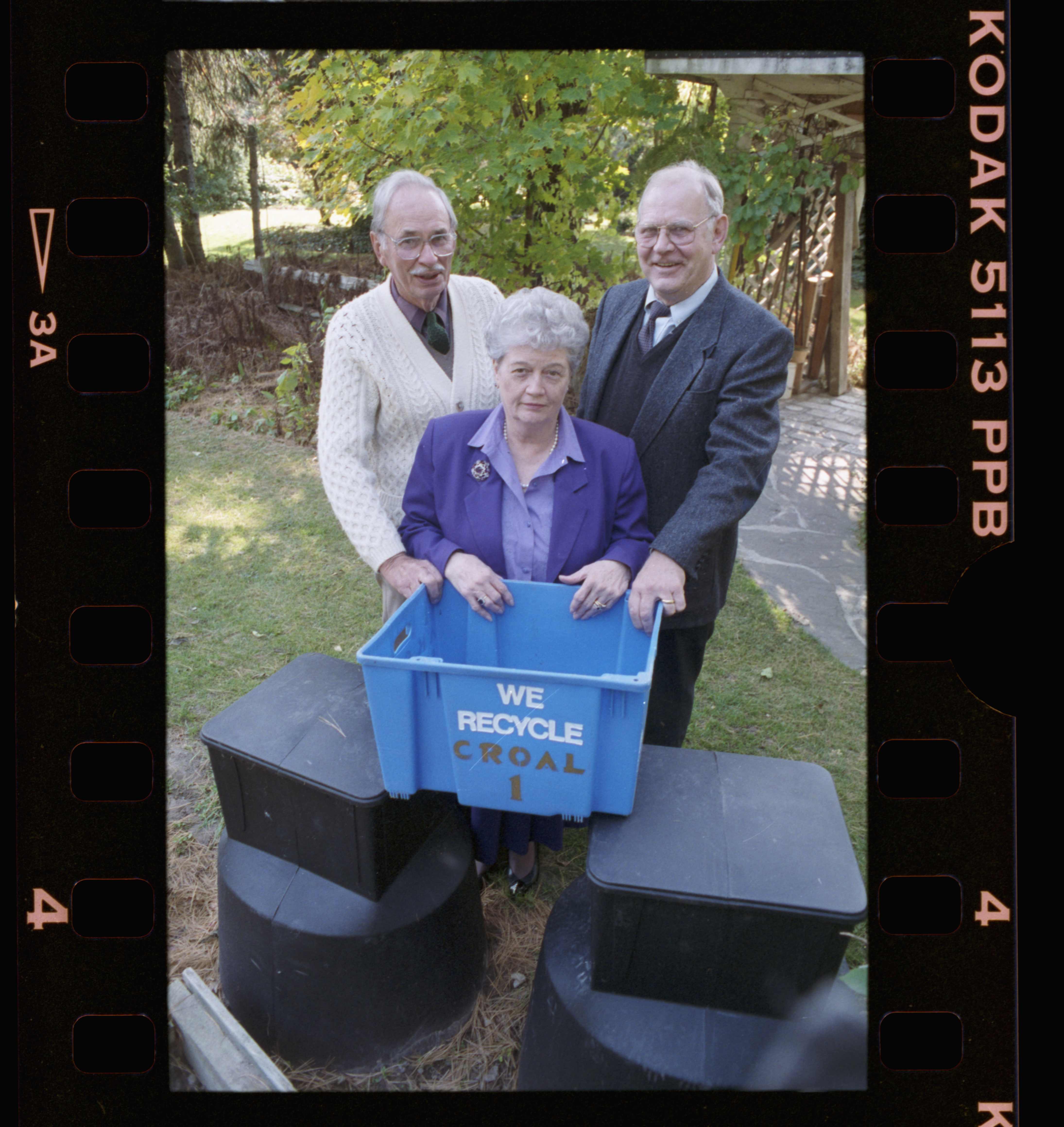Browse "Things"
-
Article
Blacksmithing
All these workers practised a technology that came from the great French craft tradition; their highly skilled art derived from trade guild knowledge, instruction and scientific treatises.
"https://d2ttikhf7xbzbs.cloudfront.net/media/media/1e459b6f-fe80-4090-8780-016a87e863bd.jpg" // resources/views/front/categories/view.blade.php
https://d2ttikhf7xbzbs.cloudfront.net/media/media/1e459b6f-fe80-4090-8780-016a87e863bd.jpg
-
Article
Blanding's Turtle
The Blanding’s turtle (Emydoidea blandingii) is a medium-sized, freshwater turtle that is native to northeastern North America. In Canada, Blanding’s turtles are found throughout southern and central Ontario, in extreme southwestern Quebec, and in southern Nova Scotia. Blanding’s turtles are endangered throughout their range. The primary threats to the species in Canada include widespread mortality on roads and ongoing loss of wetland habitat.
"https://d2ttikhf7xbzbs.cloudfront.net/BlandingsTurtle/BlandingsTurtle.jpg" // resources/views/front/categories/view.blade.php
https://d2ttikhf7xbzbs.cloudfront.net/BlandingsTurtle/BlandingsTurtle.jpg
-
"https://development.thecanadianencyclopedia.ca/images/tce_placeholder.jpg?v=e9dca980c9bdb3aa11e832e7ea94f5d9" // resources/views/front/categories/view.blade.php
https://development.thecanadianencyclopedia.ca/images/tce_placeholder.jpg?v=e9dca980c9bdb3aa11e832e7ea94f5d9
-
Article
Blindness and Vision Loss
There are approximately 836,000 visually impaired Canadians, although only a small number of them have been blind from birth.
"https://development.thecanadianencyclopedia.ca/images/tce_placeholder.jpg?v=e9dca980c9bdb3aa11e832e7ea94f5d9" // resources/views/front/categories/view.blade.php
https://development.thecanadianencyclopedia.ca/images/tce_placeholder.jpg?v=e9dca980c9bdb3aa11e832e7ea94f5d9
-
Article
Blindness and Visual Impairment
In Canada, as well as in many other countries, blindness is defined in such a way as to include persons who have some sight. The expression 6/60 (20/200) means that persons considered legally blind must come within 6 m of an object in order to see it, while persons considered sighted (i.e., 6/6 vision, 20/20) can see that same object from 60 m. Persons with a visual field of less than 20 degrees in diameter are also considered legally blind in Canada. This definition of blindness provides a practical model for organizations such as social-service agencies, educational, medical and government institutions. The Canadian Council of the Blind reported that approximately 1.2 million Canadians were living with vision loss and blindness in 2019.
"https://d2ttikhf7xbzbs.cloudfront.net/TCE_placeholder.png" // resources/views/front/categories/view.blade.php
https://d2ttikhf7xbzbs.cloudfront.net/TCE_placeholder.png
-
Article
Blizzard
In Canada the official national meteorological service definition of a blizzard is a period of 6 or more hours with winds above 40 km/h, with visibility reduced to below 1 km by blowing or drifting snow, and with windchills over 1600 W/ m2 (watts per square metre).
"https://d2ttikhf7xbzbs.cloudfront.net/media/media/5495ea9b-3457-434f-85cd-cec24b373bd3.jpg" // resources/views/front/categories/view.blade.php
https://d2ttikhf7xbzbs.cloudfront.net/media/media/5495ea9b-3457-434f-85cd-cec24b373bd3.jpg
-
Article
Bloc populaire canadien
The Bloc populaire canadien is an anti-conscription and nationalist political party of the 1940s. The party participated in federal elections and in Quebec provincial elections. The Bloc received some minor electoral successes, but, by 1948, its influence had drastically diminished and the party faded away.
"https://d2ttikhf7xbzbs.cloudfront.net/media/single_use_images/Jean_Drapeau_BPC.jpg" // resources/views/front/categories/view.blade.php
https://d2ttikhf7xbzbs.cloudfront.net/media/single_use_images/Jean_Drapeau_BPC.jpg
-
Article
Bloc Québécois
The Bloc Québécois is a federal political party that was created officially on 15 June 1991 (registered by Elections Canada on 11 September 1993). It was founded as a parliamentary movement composed of Quebec MPs who left the Conservative and Liberal parties after the failure of the Meech Lake Accord. The party promotes Quebec's interests and Quebec sovereignty in the House of Commons. The party only runs candidates in the province of Quebec. Yves-François Blanchet became leader of the party in January 2019. Under Blanchet, the Bloc won 32 seats in the October 2019 federal election, returning it to official party status. See Canadian Electoral System; Voting Behaviour in Canada.
"https://d2ttikhf7xbzbs.cloudfront.net/media/media/3d3fb86b-61d3-48f1-a4cc-159ce47d256d.jpg" // resources/views/front/categories/view.blade.php
https://d2ttikhf7xbzbs.cloudfront.net/media/media/3d3fb86b-61d3-48f1-a4cc-159ce47d256d.jpg
-
Macleans
Blood Substitute Tested
According to medical lore, the ancient Incas were the first to attempt blood transfusions. And over the centuries doctors around the world have pumped everything from beer to urine into hemorrhaging patients.This article was originally published in Maclean's Magazine on August 24, 1998
"https://development.thecanadianencyclopedia.ca/images/tce_placeholder.jpg?v=e9dca980c9bdb3aa11e832e7ea94f5d9" // resources/views/front/categories/view.blade.php
https://development.thecanadianencyclopedia.ca/images/tce_placeholder.jpg?v=e9dca980c9bdb3aa11e832e7ea94f5d9
-
Article
Bloodvein River
Named, perhaps, for the red granite stripes running through the bedrock near its source, the Bloodvein River begins in the vast wilderness of the Canadian Shield, 600 km northwest of Thunder Bay, Ont, and 500 km northeast of Winnipeg.
"https://development.thecanadianencyclopedia.ca/images/tce_placeholder.jpg?v=e9dca980c9bdb3aa11e832e7ea94f5d9" // resources/views/front/categories/view.blade.php
https://development.thecanadianencyclopedia.ca/images/tce_placeholder.jpg?v=e9dca980c9bdb3aa11e832e7ea94f5d9
-
Article
Bloody Falls
Bloody Falls are rapids located about 15 km above the mouth of the Coppermine River in the central Arctic.
"https://d2ttikhf7xbzbs.cloudfront.net/media/media/ae69d3f2-aebe-4a53-b1a8-ddfebac57e3f.jpg" // resources/views/front/categories/view.blade.php
https://d2ttikhf7xbzbs.cloudfront.net/media/media/ae69d3f2-aebe-4a53-b1a8-ddfebac57e3f.jpg
-
Article
Bloody Sunday
Bloody Sunday was a violent confrontation between protesters and the Royal Canadian Mounted Police and Vancouver police in Vancouver on Sunday 19 June 1938.
"https://d2ttikhf7xbzbs.cloudfront.net/media/media/5ba00723-deb8-4e3b-b0a0-79e9b85cb189.jpg" // resources/views/front/categories/view.blade.php
https://d2ttikhf7xbzbs.cloudfront.net/media/media/5ba00723-deb8-4e3b-b0a0-79e9b85cb189.jpg
-
Article
Blue Box
The blue box is a plastic bin used in curbside recycling programs. The bins are filled with materials — including paper, glass, cans and select plastics — which are then collected by waste management professionals. Resource Integration Systems, the sister organization of a countercultural non-profit, and Superior Sanitation pioneered the blue box system in Kitchener, Ontario, in 1981. By 1986, the program began to operate province-wide. Today, blue boxes continue to be used in Ontario, home to one of the world’s most comprehensive recycling programs. Blue boxes are also used in municipal recycling programs in British Columbia, Alberta, Saskatchewan, Manitoba and Quebec.
"https://d2ttikhf7xbzbs.cloudfront.net/media/new_article_images/BlueBox/PeopleAndBox.jpg" // resources/views/front/categories/view.blade.php
https://d2ttikhf7xbzbs.cloudfront.net/media/new_article_images/BlueBox/PeopleAndBox.jpg
-
Article
Blue-green Algae
Blue-green Algae, now known as Cyanobacteria, are named for the blue-green pigment phycocyanin which along with chlorophyll a gives them a blue-green appearance. This led to Cyanobacteria being called blue-green algae before the kingdom Monera was recognized.
"https://development.thecanadianencyclopedia.ca/images/tce_placeholder.jpg?v=e9dca980c9bdb3aa11e832e7ea94f5d9" // resources/views/front/categories/view.blade.php
https://development.thecanadianencyclopedia.ca/images/tce_placeholder.jpg?v=e9dca980c9bdb3aa11e832e7ea94f5d9
-
Article
Blue-Grey Gnatcatcher
The Blue-grey gnatcatcher (Polioptila caerulea, family Muscicapidae, subfamily Sylviinae) is a tiny, migratory, insectivorous songbird.
"https://d2ttikhf7xbzbs.cloudfront.net/media/media/e06faec4-a017-43e4-acbd-b40dd8ec37f0.jpg" // resources/views/front/categories/view.blade.php
https://d2ttikhf7xbzbs.cloudfront.net/media/media/e06faec4-a017-43e4-acbd-b40dd8ec37f0.jpg
